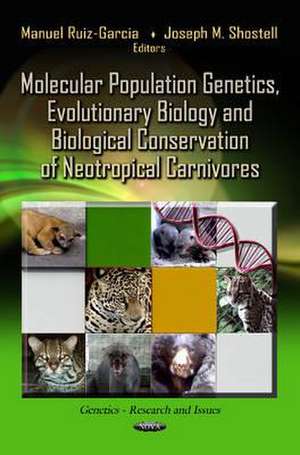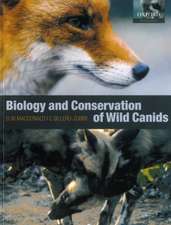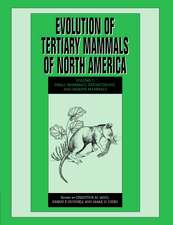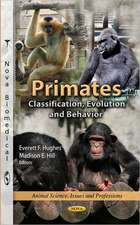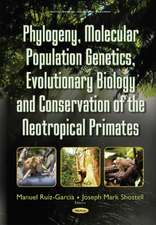Molecular Population Genetics, Evolutionary Biology & Biological Conservation of Neotropical Carnivores
Editat de Manuel Ruiz-Garcia, Joseph Mark Shostellen Limba Engleză Hardback – 9 apr 2013
Preț: 1849.63 lei
Preț vechi: 2525.90 lei
-27% Nou
Puncte Express: 2774
Preț estimativ în valută:
353.97€ • 368.19$ • 292.22£
353.97€ • 368.19$ • 292.22£
Carte disponibilă
Livrare economică 22 martie-05 aprilie
Preluare comenzi: 021 569.72.76
Specificații
ISBN-13: 9781624170713
ISBN-10: 1624170714
Pagini: 720
Ilustrații: illustrations
Dimensiuni: 187 x 263 x 44 mm
Greutate: 1.55 kg
Editura: Nova Science Publishers Inc
ISBN-10: 1624170714
Pagini: 720
Ilustrații: illustrations
Dimensiuni: 187 x 263 x 44 mm
Greutate: 1.55 kg
Editura: Nova Science Publishers Inc
Cuprins
Preface; An Introduction to the Neotropical Carnivores: A Review; Molecular Phylogenetics of Two Neotropical Carnivores, Eira Barbara (Mustelidae) & Potos flavus (Procyonidae): No Existence of Putative Morphological Subspecies; How are Amazon & Orinoco Rivers Related? Preliminary Results on the Comparative History, Structure & Dynamics of Giant Otters, Pteronura brasiliensis, from Western Amazonia; Phylogenetics Relationships among Four Putative Taxa of Foxes of the Pseudoalopex genus (Canidae, Carnivora) & Molecular Population Genetics of Ps. culpaeus & Ps. Sechurae; The Genetic Demographic History & Phylogeography of the Andean Bear (Tremarctos ornatus) by Means of Microsatellites & mtDNA markers; Population Genetics of the Felid leopardus guigna in Southern South America: Identifying Intraspecific Units for Conservation; Population Genetics & Spatial Sructure in Two Andean Cats (the Pampas cat, Leopardus pajeros & the Andean Mountain Cat, L. jacobita) by Means of Nuclear & Mitochondrial Markers & Some Notes on Skull Biometrics; Population Genetics & Phylogeographic Analyses of the jaguarundi (Puma yagouaroundi) by Means of Three Mitochondrial Markers: The First Molecular Population Study of this Species; Craneometric & Microsatellite Genetic Differentiation among Putative Ocelot Subspecies (Leopardus pardalis) throughout Latin America; Determination of Microsatellite DNA Mutation Rates, Mutation Models & Mutation Bias in Four Main Felidae Lineages (European wild cat, Felis silvestris Ocelot, Leopardus pardalis Puma, Puma concolor Jaguar, Panthera onca); Population Genetics & Phylogeography of the Largest Wild Cat in the Americas: An Analysis of the Jaguar by Means of Microsatellites & Mitochondrial Gene Sequences; Craniometric Variation in Jaguar Subspecies (Panthera onca) from Colombia; Reproduction & Placentation in Neotropical Carnivores; Fossils of South American Land Carnivores (Carnivora, Mammalia); Andean Bear Core Area Overlap in the Intag Region, Ecuador; Hematology & Blood Chemistry of the Andean Bear (Tremarctos ornatus) in Ecuador: Comparative Values between Captive Zoo Bears & Rehabilitated-Free Bears; State of the Andean Bear (Tremarctos ornatus) in Bolivia; Where Will Jaguars Roam? The Importance of Survival in Unprotected Lands; The Jaguar Corridor Initiative: A Range-Wide Conservation Strategy; Diversity, Distribution & Conservation of Bolivian Carnivores; Index.
